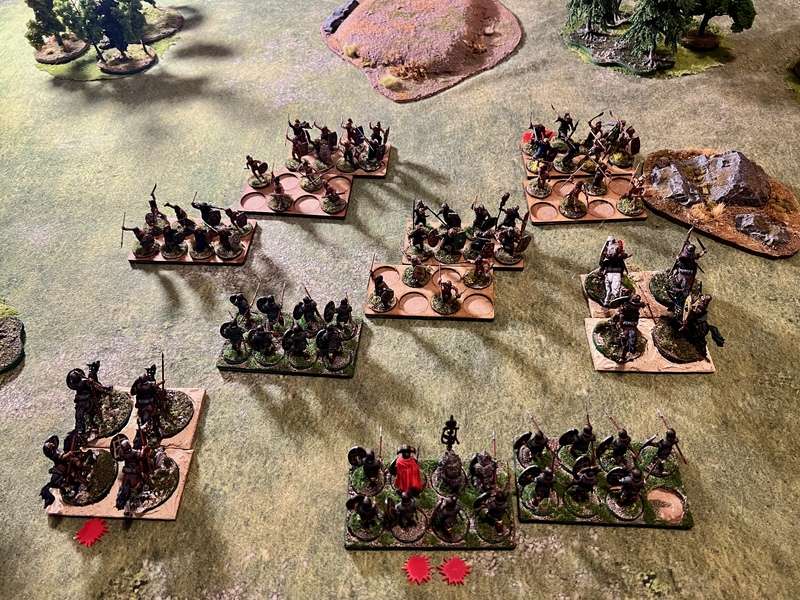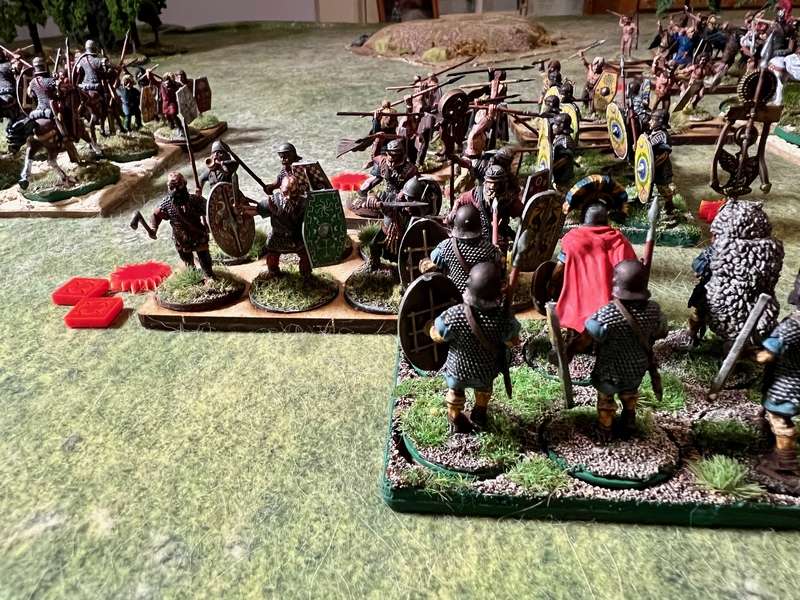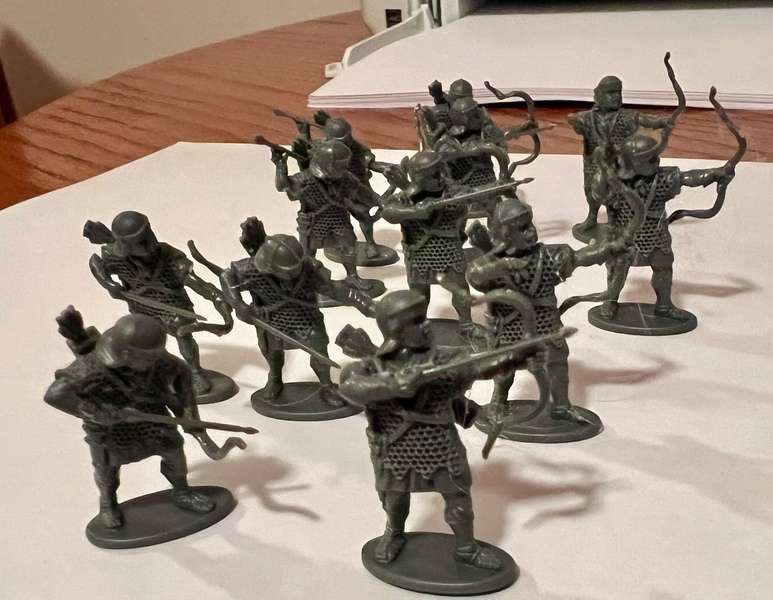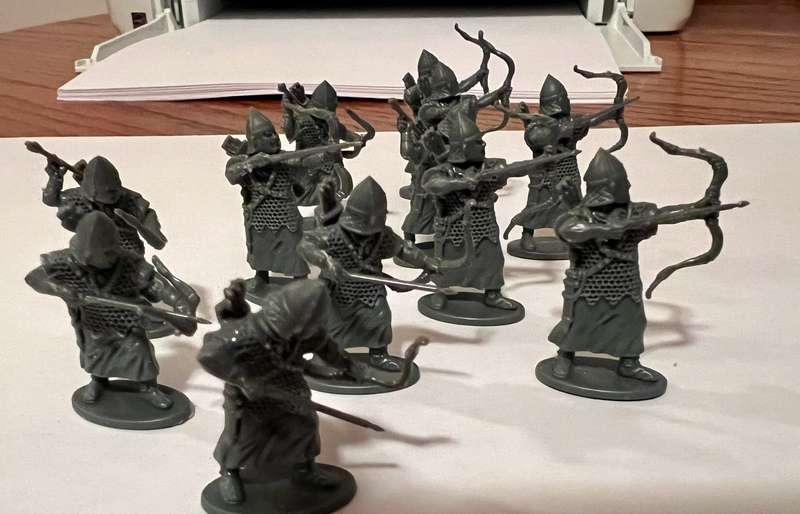Three Ages of Rome (3AoR) is written by UK wargamer Philip Garton for the Helion Books war-games series (published 2022). Garton has a number of ancient and early modern rules to his credit. Even though it is written with massed armies in 6mm and 15mm in mind, I found 3AoR an easy and quick way to play an Ancients battle using my 28mm figures, using the recommended adjust of +50% to movement and ranges for 28mms.
Friday, May 17, 2024
A Battle In Germania: Playing Three Ages of Rome
Three Ages of Rome (3AoR) is written by UK wargamer Philip Garton for the Helion Books war-games series (published 2022). Garton has a number of ancient and early modern rules to his credit. Even though it is written with massed armies in 6mm and 15mm in mind, I found 3AoR an easy and quick way to play an Ancients battle using my 28mm figures, using the recommended adjust of +50% to movement and ranges for 28mms.
Saturday, May 11, 2024
Saturday Workbench: Victrix Roman Archers
After saying in my last post that I was treating my newfound hobby fascination with Ancients with caution, I've spent the day chopping and glueing a set of Victrix early imperial Roman auxiliary archers. I found it fairly simple to assemble them, each figure has only five parts - body, arms, head and quiver - and yet there's a satisfying number of poses.
The Victrix set comes with a dozen western and a dozen eastern Roman figures, so I started with the western ones first.
I then started looking at the dozen eastern figures still on the sprues and got to thinking that they looked exotic enough to serve as Easterlings or Haradrim in a Middle Earth setting. I never did like the Easterlings that Games Workshop released for their LOTR range, but these figures would do nicely, so I got to work.
Monday, May 6, 2024
A Small Ancients Diversion: Victrix 28mm Roman Auxiliary
I've always tried to be careful about overextending my hobby energies into too many periods, but I often fail. A few years ago, when Clash of Spears was all the rage at my local gaming store, I painted a Germanic war band and developed a fondness for Victrix figures. A little fiddly to put together, but they come with a pleasing range of options and they paint up nicely. So I thought that my Germanii could use some opponents for solitaire play and decided on, of course, Romans. My friend James likes to say that the auxiliaries made up the backbone of the Roman armies, rather than the sexier legionaries, and so that was my next step into the world of ancients wargaming.
Here's the first set complete, and tucked into 8 figure bases from now defunct 4Ground that I bought for GW's War of the Ring rules.
Cheers and blessings to your brushes! MP+












